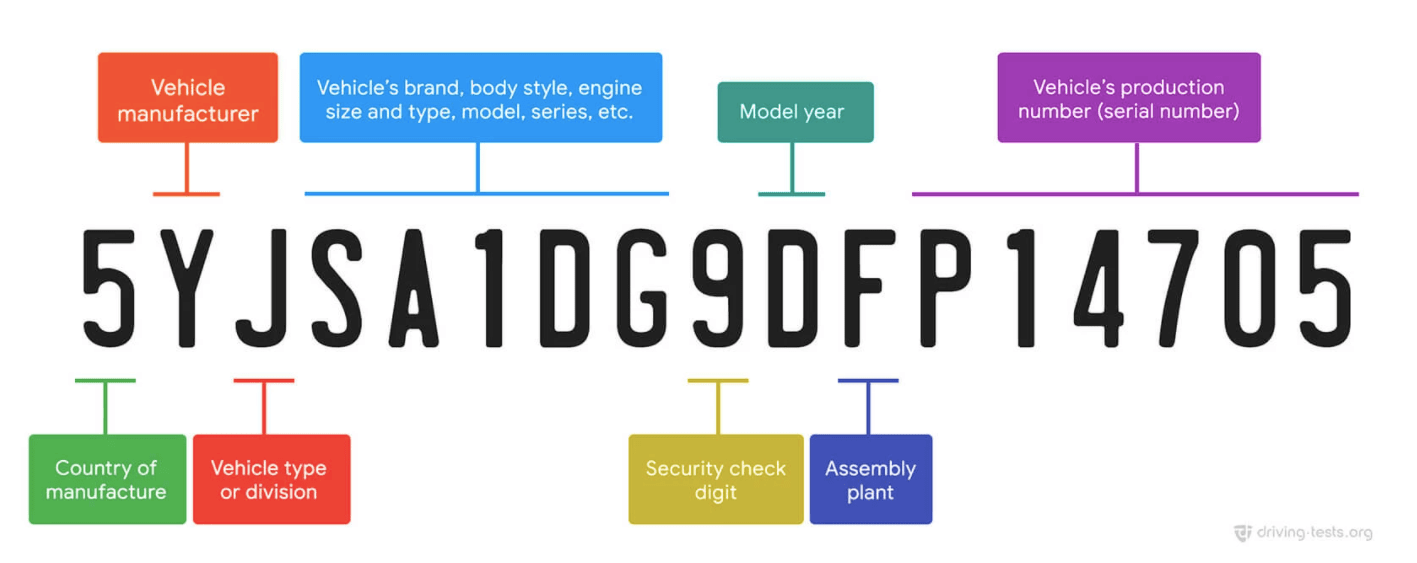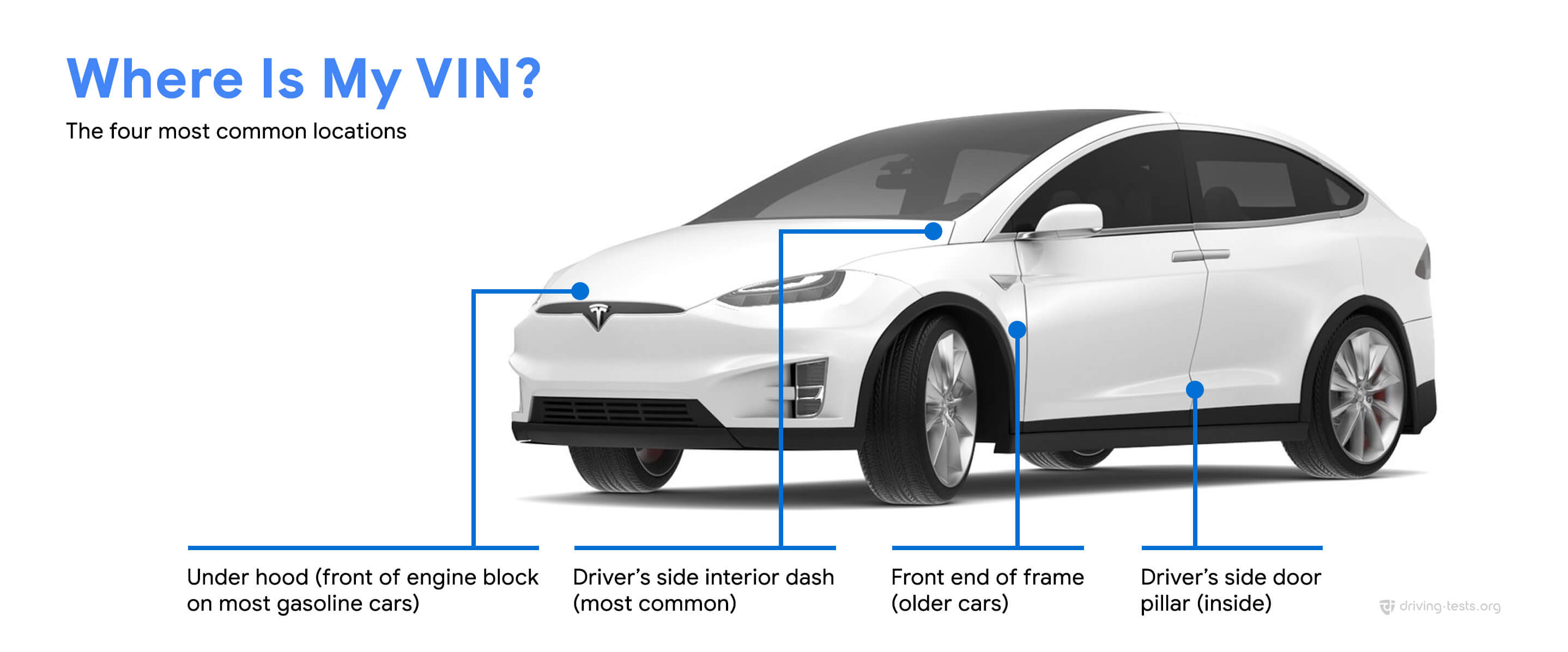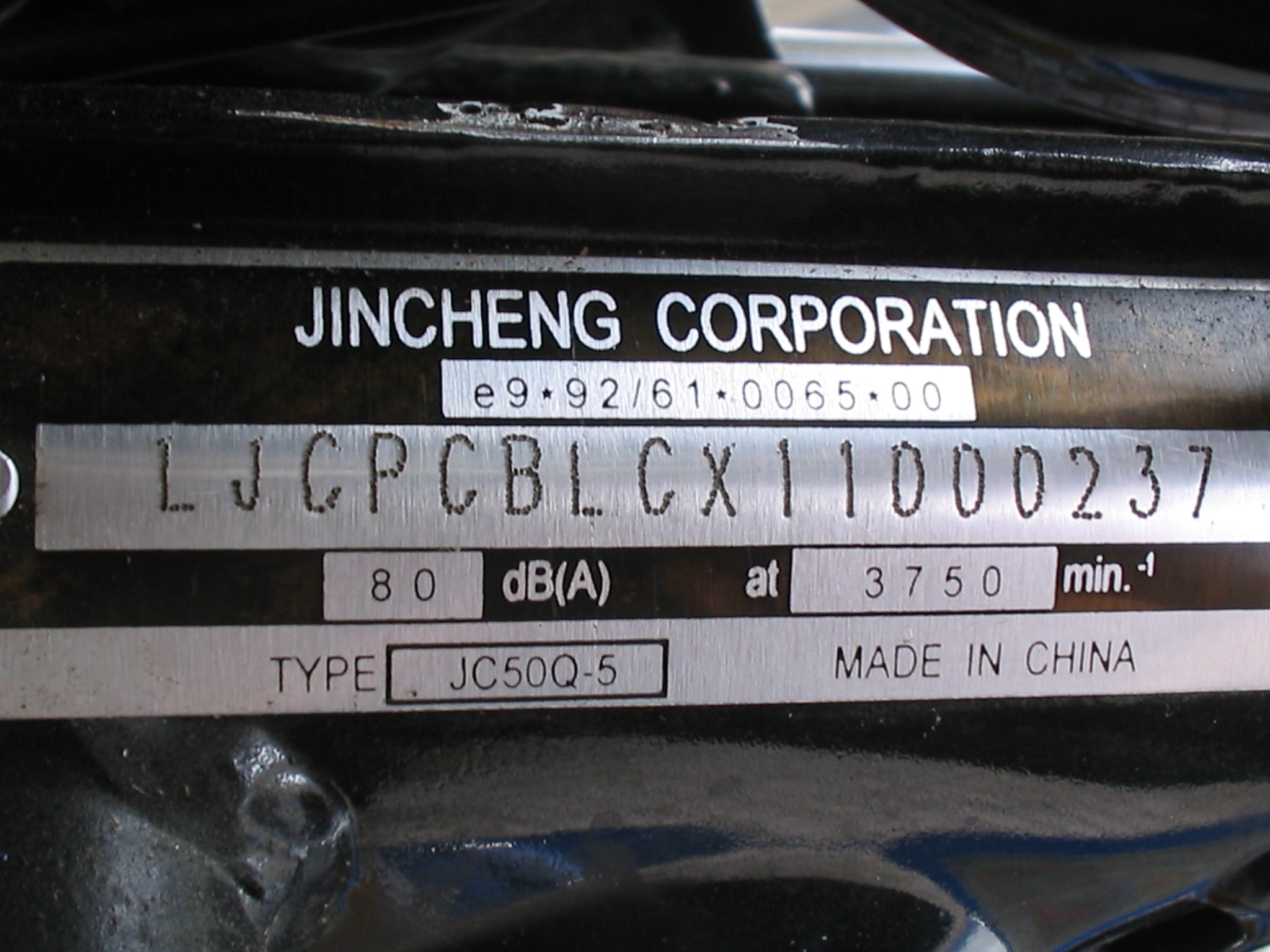Your car’s Vehicle Identification Number (VIN) contains a wide variety of information about the car: the country of assembly, the model year, and even what options it came with when it left the factory. You will need to decode the VIN in certain circumstances. For instance, if you’re interested in buying a used car, you can purchase the vehicle history report from third parties and find records of its previous owners, accidents, and repairs.
You can use a vehicle’s VIN to get information on the manufacturer’s website or do a quick online VIN lookup. There are several ways to access your car’s VIN information. Read on to learn what a VIN number tells you about a vehicle, where to find it, and different ways on how to decode it.
Contents
What Is a VIN Number?
A vehicle identification number (VIN) is a unique code assigned to every motor vehicle when it’s manufactured. VINs are usually printed in a single line and typically contain 17 characters of both letters and numbers.

This string of letters and numbers does not have any intervening spaces or the letters Q (q), I (i), and O (o) to avoid confusion with the numerals 0 and 1. Each section of the VIN provides a specific piece of information about the vehicle, including the year, country, maker and factory plant of assembly, the make and model, factory options and the serial number.
The first three characters of every VIN number, called the World Manufacturer Identifier or WMI code, identify the manufacturer of the vehicle. The first digit stands for the country the vehicle was manufactured in, for instance 1 is for the United States. The second designates the manufacturer, for example, Toyota. The third designates the type of vehicle, for instance “light truck”.
The fourth through eighth digits of the VIN will contain factory options, such as the engine, the transmission, the trim, emissions specifications, the model, and body style. The ninth digit is a “check digit” that does not tell any information about the vehicle but is used to prove the authenticity of the VIN (if you suspect the vehicle has a fake VIN number, contact the manufacturer).
The tenth digit is the model year. This is important to knowing the options on the vehicle, as different model years are equipped with different option group packages. Also remember that the model year is not necessarily the year the car was built. For example, if the car was a 2019 Toyota Highlander, it might have been assembled in late 2018.
In addition to the fourth through eighth digits, the last 7 digits are perhaps the most important for finding the factory options with a VIN number. The eleventh character stands for the specific assembly plant while the twelfth through seventeenth designate where the vehicle fell in the sequential production line, as well as other important production-specific information.
The information encoded in the last 7 digits of a VIN number, which are also your car’s serial number, will provide specifics about a number of options. These include info about common options like trim color, sunroof, seat covering materials, power seats and windows, entertainment system, and equipment packages like off road or towing.
Do note that if your vehicle was made before 1981, the VIN will most likely contain 11 characters, and not every online VIN decoder tool is meant for these older VINs.
Why the VIN Is Important
Many data registries use VINs to record details of the vehicle’s history. Law enforcement agencies also perform a VIN lookup to identify stolen vehicles. Otherwise, there are certain circumstances in which potential car buyers and existing car owners will want to check a vehicle’s VIN.
The most common scenario is if you’re interested in buying a used car, you can purchase the vehicle history report from a third party website and find records of its previous owners, accidents, and repairs. In addition, you can also find out if the manufacturer had ever issued a recall of the vehicle due to faulty parts and what repairs were made.
Where Is It?

On most passenger cars, you may find the VIN number on the front of the dashboard on the driver’s side. The best way to see it is to look through the windshield from outside the car. The next most likely sport is on the driver’s side door pillar. Open the door and look around the area where the door latches to the car.
On motorcycles, the VIN number is usually on the steering neck below the handlebars, or on the motor or sometimes on the frame near the motor. For semi trailers, the VIN number is located on the left side of the front part of the semi trailer.
In case you can’t find the VIN number on the vehicle, it might be easier to find it on the car’s paperwork like on your vehicle’s title, registration, repair records or liability insurance documents.
READ MORE
- How To Buy A Car With No License
- What Happens If You Don’t Register Your Car?
- 7 Things You Need To Know About Registration Plates And Car Insurance In The UK
4 Ways To Find Factory Options With VIN Number
Use Online VIN Decoders

There are a good many websites that offer free VIN lookup services. Simply run an internet search for “free VIN lookup” or “free VIN decoder.” There is also a VIN decoder provided by the US National Highway Traffic Safety Administration (NHTSA) from the data submitted by the manufacturers to NHTSA, if you feel better with a “.org” website.
Simply enter your vehicle’s 17-character Vehicle Identification Number (VIN) in the field above to look up and receive an instant report on its manufacturer, brand, model year, assembly plant, make and model, engine, body style and other factory options. Note that the VIN detail reports should include anything that was changed in the production process, but typically may not include options added after the manufacturer, added at the dealership, or added by the consumer after the initial sale.
Also note that most VIN decoder tools are intended for use with vehicles manufactured after 1981, which have 17-character VINs. Vehicles made before 1981 most likely come with a 11-character VIN and might need special VIN decoders to look them up.
Visit the Manufacturer’s Website
Between 1954-1981, there was no standard format for VINs, thus the best source for information on a vehicle of this period would be to contact the original manufacturer. Once you’ve got the VIN number, visit the manufacturer’s website. The carmaker’s website will typically offer a lookup tool for potential and existing buyers to decode the VIN.
Call the Dealership or Manufacturer
In the case that the manufacturer’s website does not offer such a resource, call the dealership or manufacturer if you still want to find out your specific vehicle’s factory options. Provide them with the VIN, and ask them to tell you the options information. They will be able to do so by running the VIN through their computer system.
Many car owners advise that if the dealership refuses to tell you what they should easily find out, something’s definitely fishy here and they might be trying to hide something, like the fact that they’re selling stolen vehicles.
Purchase A Vehicle History Report from Third Party
Alternatively, you can submit your VIN to a third-party website and get a detailed vehicle history report for a fee. A vehicle history report is a comprehensive history that includes data on a vehicle’s manufacture, sales, and sometimes repair information.
There are several third party companies that sell vehicle history reports such as Carfax and Autocheck. Fees normally range from between $20 to $40 for a full vehicle history report. Feel free to shop around as different websites or companies may offer different prices with promos at different times.



